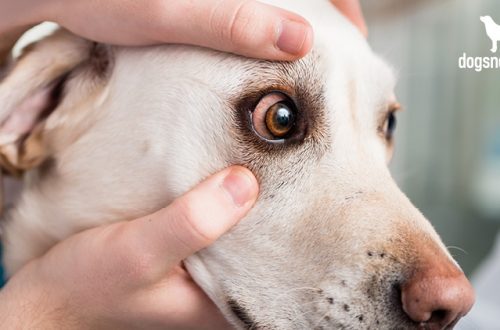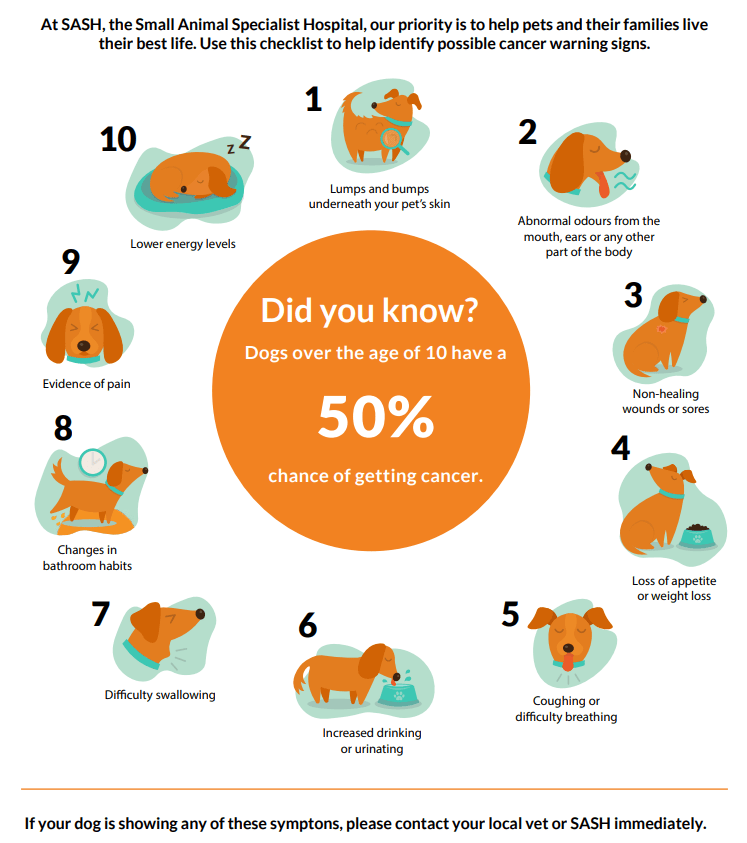
Cancer in dogs: signs of oncology and treatment
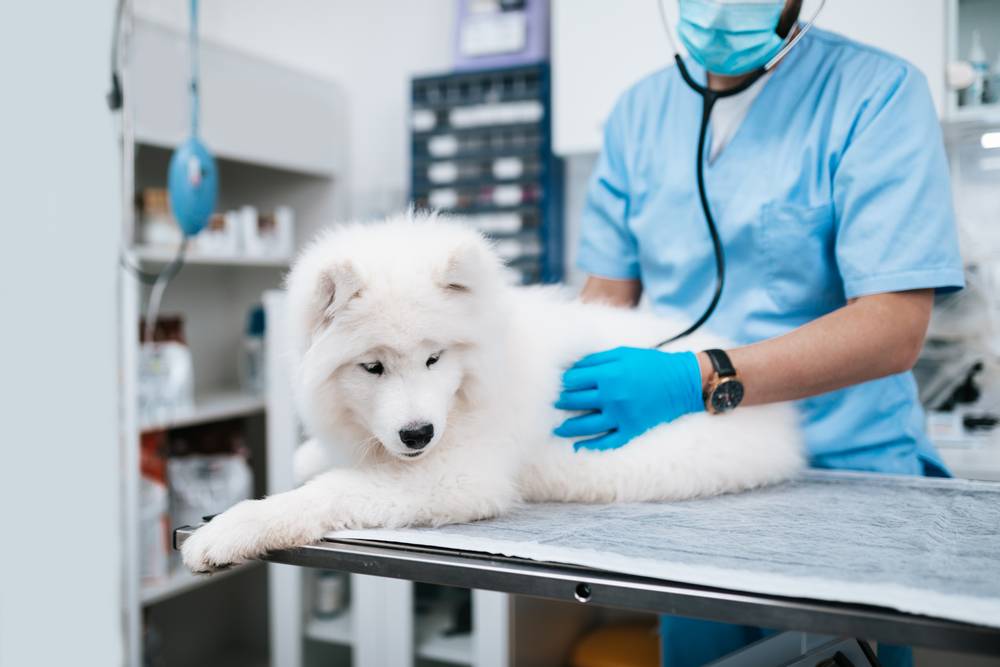
Contents
Forms of cancer
Tumors (neoplasms) are not cancer. They are benign and malignant.
Benign tumors do not cause much harm to the body, grow slowly and limitedly, and do not metastasize to other organs.
Malignant tumors are aggressive and are collectively referred to as cancer or neoplasia. They grow very quickly, affect adjacent tissues, and easily give up some of their cells. With the blood flow, they are carried throughout the body, resulting in metastases in other organs, and without treatment, the body dies.
In embryogenesis (the process of embryo development), all cells are the same, and then differentiate (divide) as soon as they move to the desired organ or place of maturation, receiving their function and performing the work of the organ – the liver, kidney, nerve, muscle, heart, etc.
When the disease occurs, the cells multiply inadequately: in such a way that the cell does not develop to a mature state, and the dog develops a tumor from the mass of these immature cells.
The form of cancer will depend on the type of cell that fails.
Any normal cell in any organ can be reborn into a cancer cell under certain circumstances.
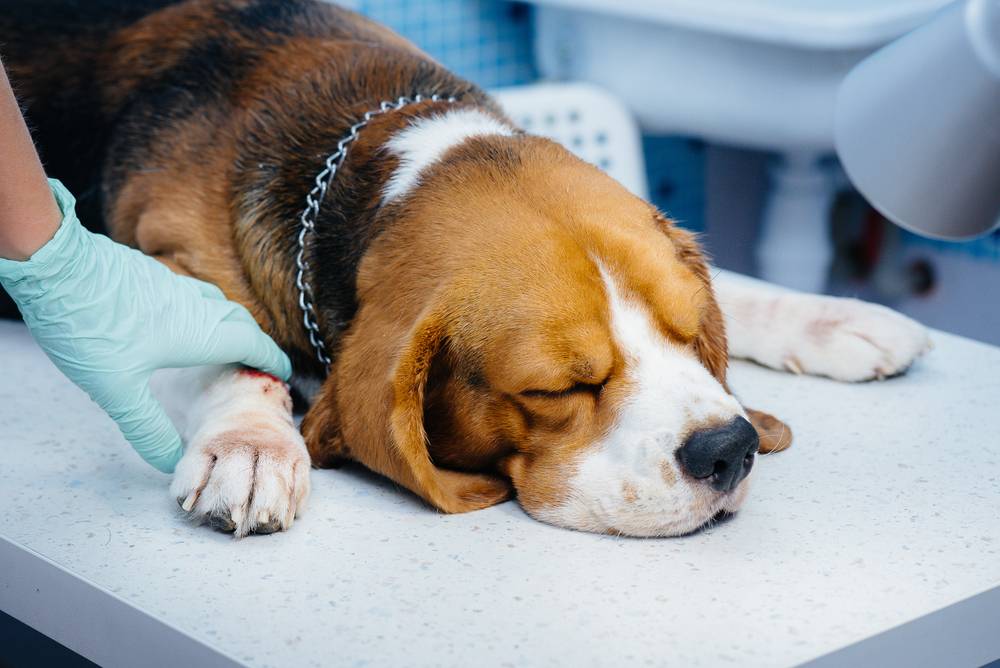
Liver Cancer in Dogs
Most often, liver tumors are benign, however, there is also cancer in dogs, localized in this organ. Hepatocellular carcinoma is a tumor from the hepatocytes themselves, the most aggressive type, since it can affect the entire surface of the organ and the parenchyma (cellular elements specialized for each organ). It is single and large. Or there may be many small tumors scattered throughout the liver.
The liver is the main filter of the body, and all blood passes through it for purification, which is why cancer cells that enter the bloodstream quickly and easily take root on this organ.
Skin cancer
The most commonly reported skin cancer in dogs is adenocarcinoma. There are glandular cells in the skin, and when they mutate, adenocarcinoma develops. These are small dense nodules on the body that lift the skin high, often they bleed heavily, change shape and grow into the thickness of the muscles.
In addition, squamous cell carcinomas (melanomas) and histiocytomas may occur. Melanoma has the appearance of a dark stalk wart, characterized by rapid growth and metastasis. Histiocytomas are tumors characteristic of young individuals. On the skin, it looks like an ulcer, under which the mass of the tumor itself grows in the thickness of the skin. This is a benign formation that does not pose a serious threat to the health of the dog. .
Lung Cancer in Dogs
Neoplasias (neoplasms) in the lungs can be an independent disease, but are extremely rare. They are mistaken for bronchopneumonia and treated with antibiotics, which of course does not lead to a positive result. Primary lung cancer in dogs can develop from bronchial epithelial cells or cells of the alveoli themselves.
The most common lung metastases in dogs are from other neoplasias in the body. With the flow of lymph, tumor cells enter the lungs and begin to grow, affecting adjacent tissues, due to which the animal cannot breathe as a result.

bowel cancer
Bowel cancer in dogs often develops as a ring around a specific area of the large or small intestine, reducing its lumen and making it difficult for food and feces to pass through it. Hence, the specific symptoms of intestinal cancer in a dog appear: vomiting, pain, chronic constipation.
The clinical picture of the disease is similar to the development of intestinal obstruction. The most common, regardless of breed, is lymphosarcoma. However, male German Shepherds, Boxers and Collies are predisposed to developing adenocarcinomas.
dog stomach cancer
Gastric cancer in dogs, according to modern research, is very rare. It does not exceed 1% of the tumors encountered. If, nevertheless, a stomach tumor is diagnosed in a pet, then it is usually adenocarcinoma or lymphoma. Symptoms of the disease are similar to those of gastritis. The most predisposed to them are such breeds as chow-chow, bull terriers, collies, staffordshire terriers. The disease is common in older dogs.
Uterine Cancer in Dogs
Uterine cancer develops as a result of hormonal disruptions, chronic inflammatory processes in the uterus, uncontrolled childbirth in dogs, false pregnancy, ovarian cysts. There are sarcomas and fibrosarcomas in the uterus. All unsterilized bitches are predisposed in the second half of life.
To provoke the development of a tumor can take hormonal drugs or infection with a virus. For example, venereal sarcoma mainly affects the vulva and vagina, and infection occurs through contact with another infected genital organ – during mating. It can sometimes affect the nose, lips, and eyes if the dog has sniffed or licked the infected vulva. This type of cancer is viral in origin.
Blood cancer
Leukemia is a serious blood disease that belongs to the group of cancers. Mutates in blood and lymph cells, bone marrow. Protective cells circulate in the blood – lymphocytes, which fight viruses and bacteria encountered on the way of the body. As a result of blood cancer, these cells are not produced, and the animal’s body becomes defenseless against any danger from the outside.
Symptoms of blood cancer in dogs are apathy, lethargy, loss of appetite. Often there is an increase in lymph nodes, then multiple organ failure (stress reaction of the body) develops, mucous membranes turn yellow, anemia and bleeding are sometimes noted.

breast cancer
Breast cancer in dogs is the most common type of the disease. Rarely seen in males, but common in unsterilized females. It has no breed predisposition, usually appears in older individuals. The most common types of sarcomas and carcinomas. First, a small dense formation is felt in the dog’s mammary gland, it gradually grows and can spread to neighboring packages of the mammary glands. About half of the cases of neoplasia in dogs spread to the lungs.
Prostate cancer
Canine prostate cancer occurs in uncastrated males over 7 years of age. Register most often adenocarcinoma – a hormonally dependent tumor. For a long time, cancer is asymptomatic and metastasizes to the bones, lungs, and lymph nodes. Usually, changes in the prostate gland are detected by chance and already in the later stages, when the dog can no longer be helped.
bladder cancer
Transitional cell tumor of the bladder develops from the lining of the bladder, affecting its neck and urethra. In males, the prostate gland is often affected. The tumor blocks the urethra, impeding the outflow of urine, causing its acute delay, blood appears in the urine.
Scottish Terriers are prone to bladder cancer. This is an aggressive type of tumor that grows rapidly and affects surrounding tissues.
Bone cancer
Bone cancer usually affects those bones that bear the greatest load during life – the hip, knee, pelvis, shoulder, tibia.
It all starts with lameness and soreness in the affected area. Swelling often develops, and the skin at the site of the tumor may be red and ulcerated. The most common is osteosarcoma. As the cancer progresses, the bone “dissolves”.

Cancer symptoms in dogs
In the early stages of cancer, there may be general malaise. The dog moves less, appetite decreases, and symptoms of a gastrointestinal disorder may appear. If the tumor is on the surface of the body, on the skin, muscles or mucous membranes, then a visible seal will appear.
As the stage progresses, the symptoms of cancer will also progress.
Cancer roasted in the early stages it will manifest itself as a general malaise, appetite will decrease, the quality of wool will deteriorate, the color and consistency of feces may change, and the liver will increase in size. With the progression of cancer, the symptoms will also worsen: the mucous membranes and skin will turn yellow in the pet, ascites (abdominal dropsy), shortness of breath, and pain will appear. In the most advanced stages, uncontrolled vomiting of bile may occur.
Skin cancer first manifests itself in the form of small seals on the skin or in the skin, gradually ulcerations and non-healing ulcers appear on them. The pet has no complaints about the general condition until the last stage of cancer, until metastases appear in the internal organs.
Lung cancer at first disguised as symptoms of bronchitis. The dog coughs, gets tired quickly, shortness of breath often appears. In later stages, when coughing, blood can be released, fluid accumulates in the chest, and it is difficult and painful for the dog to breathe.
Bowel and stomach cancer first of all, it is manifested by a violation of the stool, diarrhea of a different nature and vomiting. As the stage worsens, there will be persistent diarrhea, weight loss, and swollen lymph nodes.
Uterine cancer has been asymptomatic for a very long time. It can cause disturbances in the regularity of estrus, chronic inflammation in the uterus and, as a result, vaginal discharge.
breast cancer has similar symptoms, but the owner may also find lumps in the mammary glands, which eventually grow, rupture and ooze pus and blood.
Blood cancer – one of the most difficult types of cancer, since, in fact, the whole body is sick, and the symptoms can be completely different. The most common are fever without cause, anemia, swollen lymph nodes, general malaise.
Prostate cancer and Bladder have similar symptoms – difficulty urinating, blood in the urine, pain, urinary retention may develop.
Bone cancer manifested by asymmetry of the bone in the affected area, pain, lameness, if it develops on the limb.

Causes of the disease
As we have already figured out, the cause of cancer is a cell mutation, as a result of which it begins to divide and deform uncontrollably.
However, there are predisposing factors for cancer in dogs.
Cancer is a disease of aging. As the body ages, the defense mechanisms that detect and eliminate such mutated cells become less effective. This increased risk of developing cancer with age has been documented in both human and veterinary medicine.
Another factor that predisposes to gene damage is exposure to carcinogens (environmental factors), viruses, as well as physical factors such as UV radiation, which can have a cumulative effect.
Hormonal failures often lead to the formation of hormone-dependent tumors – in the genitals, in the glands that secrete hormones.
There are theories stating that a long-term lack of oxygen – hypoxia – can provoke mutations in cells. With the blood, oxygen is delivered to each cell, if for some reason it is not enough, the cells suffer, die or mutate.
There are also theories about genetic predisposition. Cancer is inherited, but not everyone inherited progresses.
There is no clear cause of cancer, many theories are being developed by scientists, and they all have a place to be.
However, it is worth noting that poor quality of life, improper diet, poor quality food, frequent illnesses, chronic diseases, low physical activity and lack of reproduction control are predisposing, provoking factors for the development of cancer.
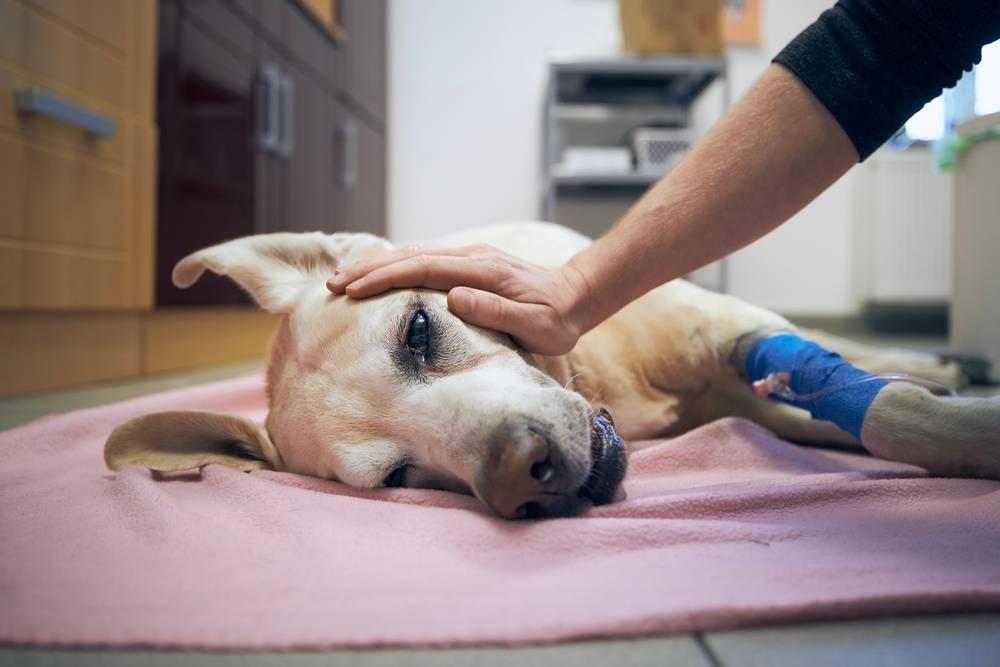
Stages of the disease
The stages of tumor development in dogs have a standard classification. It is used in humans, cats and all types of dogs, regardless of the type of disease.
- Primary education appears. It does not affect the surrounding tissues and only begins to gain tumor mass. If a tumor is found at this stage, the pet will make a full recovery with proper treatment.
- Active growth and metastasis begins in the lymph nodes located nearby. The prognosis at this stage worsens.
- The defeat of the lymph nodes increases, but other organs are not affected. At this stage, complete recovery of the dog is not possible, and the prognosis becomes very cautious.
- The terminal stage – the primary formation completely affects the main organ, metastases appear in other organs. There is no treatment at this stage, and the prognosis is given only for life expectancy.
Diagnostics
In order to determine the oncology in dogs, it is first necessary to conduct an examination of the pet. The veterinarian carefully examines the skin and mucous membranes, palpates the internal organs, evaluates the physiological parameters. Often, already at this stage, the doctor detects signs of a tumor, so you can detect cancer of the skin, uterus, breast, prostate, bone.
Next, a full screening (comprehensive examination) of the body is carried out. Perform blood tests to assess organ function, the number of white and red blood cells in the patient. This will show indirect signs that allow you to suspect the presence cancer roofs. An ultrasound examination of the abdominal cavity is performed to determine the location of the tumor and its affiliation (to which organ it is attached) and the presence of metastases is assessed. Research will help you find tumor of the liver, intestines, stomach, uterus, bladder, prostate. A chest x-ray is performed to assess the condition of the lungs, detect focal lesions and metastases.
If the tumor is located in the lymph nodes, spinal cord or brain, or if it is very small, then CT and MRI will help to detect it.
After a tumor is found, its type must be determined. Accurate determination of the type of tumor in any form of cancer will allow diagnostic aspiration biopsy (DBA), core needle biopsy (TIB), trepanobiopsy and open (surgical) biopsy. These tests can provide information about soft tissue tumors. During these studies, tumor material is taken using special tools, then it is studied under a microscope to determine the type of cancer.
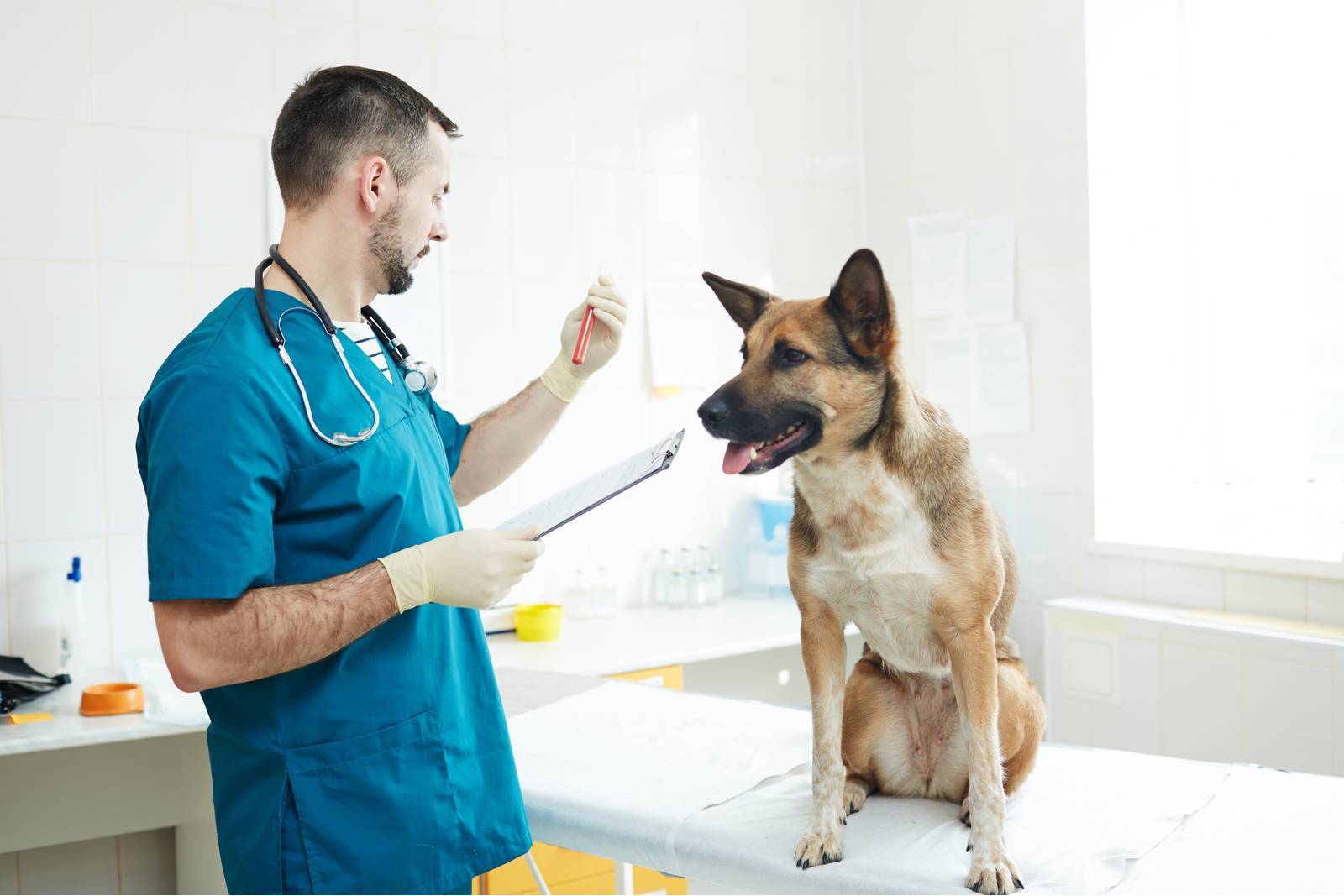
Treatment
Cancer in dogs is not a death sentence. Many types of cancer can be successfully treated with timely medical attention. The treatment uses the principle of multimodality, that is, the use of several methods of treatment. Most often, when a tumor is found, it must be removed. Next, a complex of chemotherapy of various combinations is prescribed, which are selected depending on the stage and type of cancer by the oncologist.
Cancer of the liver, skin, intestines, stomach, uterus, mammary glands, bladder treated surgically. The primary tumor and large metastases are removed. Next, the type of cancer is determined and sessions of chemotherapy and radiation exposure are performed to destroy small metastases and the remainder of cancer cells.
Lung cancer difficult to treat, they always try to remove the main focus if possible, but often this is impossible, since the tumor in the chest grows rapidly and becomes difficult to access. Then chemotherapy is first prescribed in order to reduce the tumor in size, and then, if possible, it is removed. The same happens with prostate cancer.
Blood cancer can only be treated with properly selected punctures of chemotherapy and radiation.
RџSЂRё bone cancer bone amputation is shown – limbs, jaws, tails, etc. A completely affected bone is removed, aggressive chemotherapy will prevent the spread of cancer to neighboring organs and destroy metastases in the lymphatic system.
In addition to the main treatment for the fight against cancer, symptomatic therapy is prescribed – painkillers, antiemetics, drugs to correct anemia, antibiotics. All this directly depends on the stage at which the treatment began.
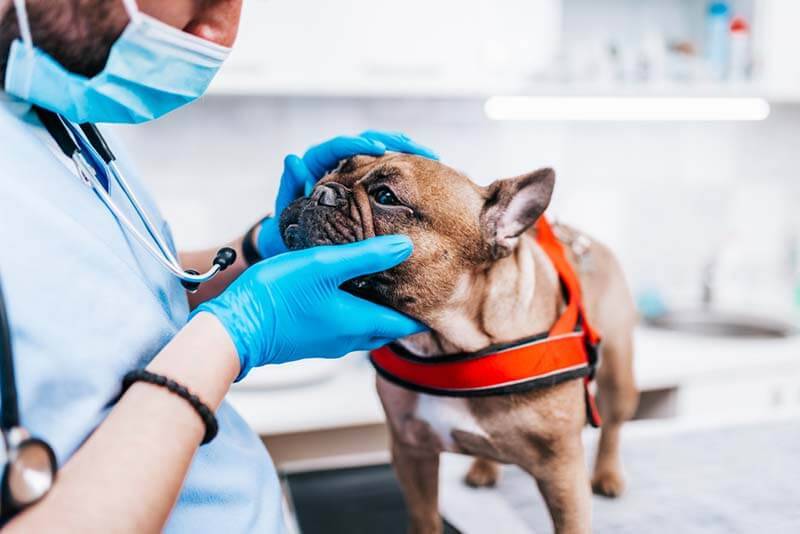
How long do dogs with cancer live
The prognosis for a pet’s life expectancy directly depends on the stage of cancer development at which the patient was treated. If a complete recovery is possible at the first stage, and the dog will live a long and carefree life, then with each subsequent stage the prognosis worsens.
The average life expectancy when seeking help at stages 2-3 is from 3 months to 3 years.
At stage 4, unfortunately, it is no longer possible to treat cancer. Therapy is prescribed to reduce symptoms, give recommendations for caring for the pet. The life span in this case can be from several days to several weeks. Often at this stage it is proposed to carry out humane euthanasia (euthanasia) for a pet, since the quality of life of such a dog is very low.
Prevention
Since most mutations are genetically transmitted, it is worth being more careful about breeding and culling out all individuals with a carriage of cancer genes.
Castration can reduce the risk of developing hormone-dependent tumors.
Timely treatment of any disease, the absence of chronic diseases reduces the risk of oncology.
Do not use carcinogenic substances in the diet, when washing or treating the dog. Do not give her hormonal drugs of any type without a doctor’s prescription.
Conduct regular check-ups and check-ups.
Oncology in Dogs Essentials
- Oncology is a complex system of diseases resulting from abnormalities within the cell.
- Some types of cancer are considered genetic diseases, but at the same time, they are not always inherited.
- Oncology in dogs can be manifested by various general symptoms – a decrease in appetite, activity, a change in the quality of coat and constitution. Specific symptoms that depend on the damage to a particular organ include lameness with bone cancer, blood in the urine with bladder cancer, etc.
- The main treatment for a tumor is surgical removal. Next, chemotherapy is carried out to destroy metastases and prevent recurrence (repeat) of cancer.
- Success in the treatment of oncology directly depends on the stage at which it was started.
Answers to frequently asked questions
Sources:
- Carolyn J. Henry, Mary Lynn Higginbotham Cancer management in small animal practice., 2010.
- Shulga. E.S., Tatarnikova N.N., Doctor of Veterinary Sciences, Professor, Preliminary Non-Invasive Biopsy in Small Animal Oncology. Journal “Izvestia” No. 5 (73) 2018






